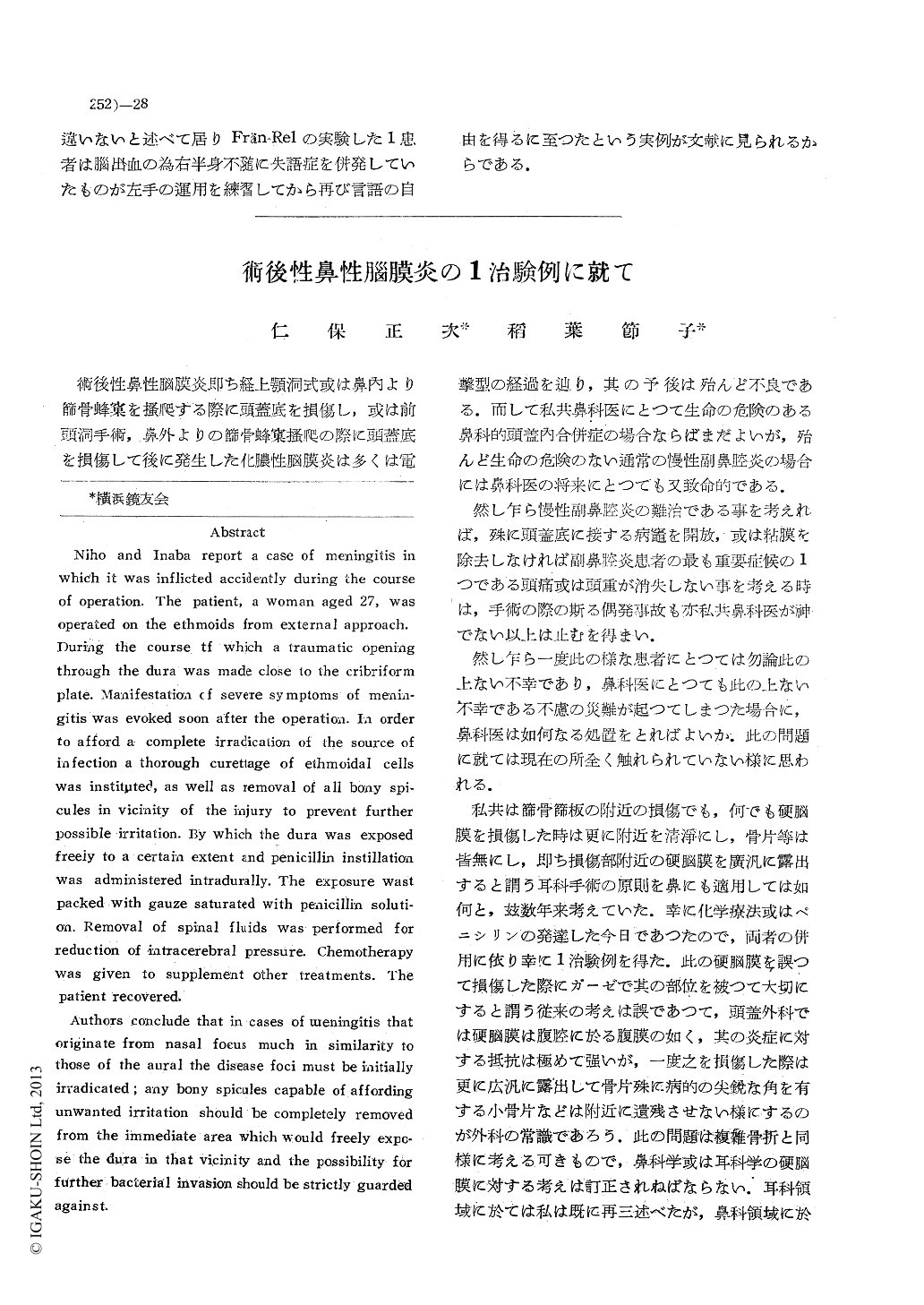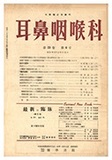- 有料閲覧
- 文献概要
- 1ページ目
術後性鼻性脳膜炎即ち経上顎洞式或は鼻内より篩骨蜂窠を掻爬する際に頭蓋底を損傷し,或は前頭洞手術,鼻外よりの篩骨蜂窠掻爬の際に頭蓋底を損傷して後に発生した化膿性脳膜炎は多くは電撃型の経過を辿り,其の予後は殆んど不良である.而して私共鼻科医にとつて生命の危険のある鼻科的頭盖内合併症との場合ならばまだよいが,殆んど生命の危険のない通常の慢性副鼻腔炎の場合には鼻科医の将来にとつても又致命的である.
然し乍ら慢性副鼻腔炎の難治である事を考えれば,殊に頭盖底に接する病竈を開放,或は粘膜を除去しなければ副鼻腔炎患者の最も重要症候の1つである頭痛或は頭重が消失しない事を考える時は,手術の際の斯る偶発事故も亦私共鼻科医が神でない以上は止むを得まい.
Niho and Inaba report a case of meningitis in which it was inflicted accidently during the course of operation. The patient, a woman aged 27, was operated on the ethmoids from external approach. During the course tf which a traumatic opening through the dura was made close to the cribriform plate. Manifestation of severe symptoms of meningitis was evoked soon after the operation. In order to afford a complete irradication of the source of infection a thorough curettage of ethmoidal cells was institpted, as well as removal of all bony spicules in vicinity of the injury to prevent further possible irritation. By which the dura was exposed freely to a certain extent and penicillin instillationwas administered intradurally. The exposure wast packed with gauze saturated with penicillin solution. Removal of spinal fluids was performed for reduction of intracerebral pressure. Chemotherapy was given to supplement other treatments. The patient recovered.
Authors conclude that in cases of weningitis that originate from nasal focus much in similarity to those of the aural the disease foci must be initially irradicated; any bony spicules capable of affordingunwanted irritation should be completely removed from the immediate area which would freely expo-se the dura in that vicinity and the possibility for further bacterial invasion should be strictly guardedagainst.

Copyright © 1951, Igaku-Shoin Ltd. All rights reserved.


